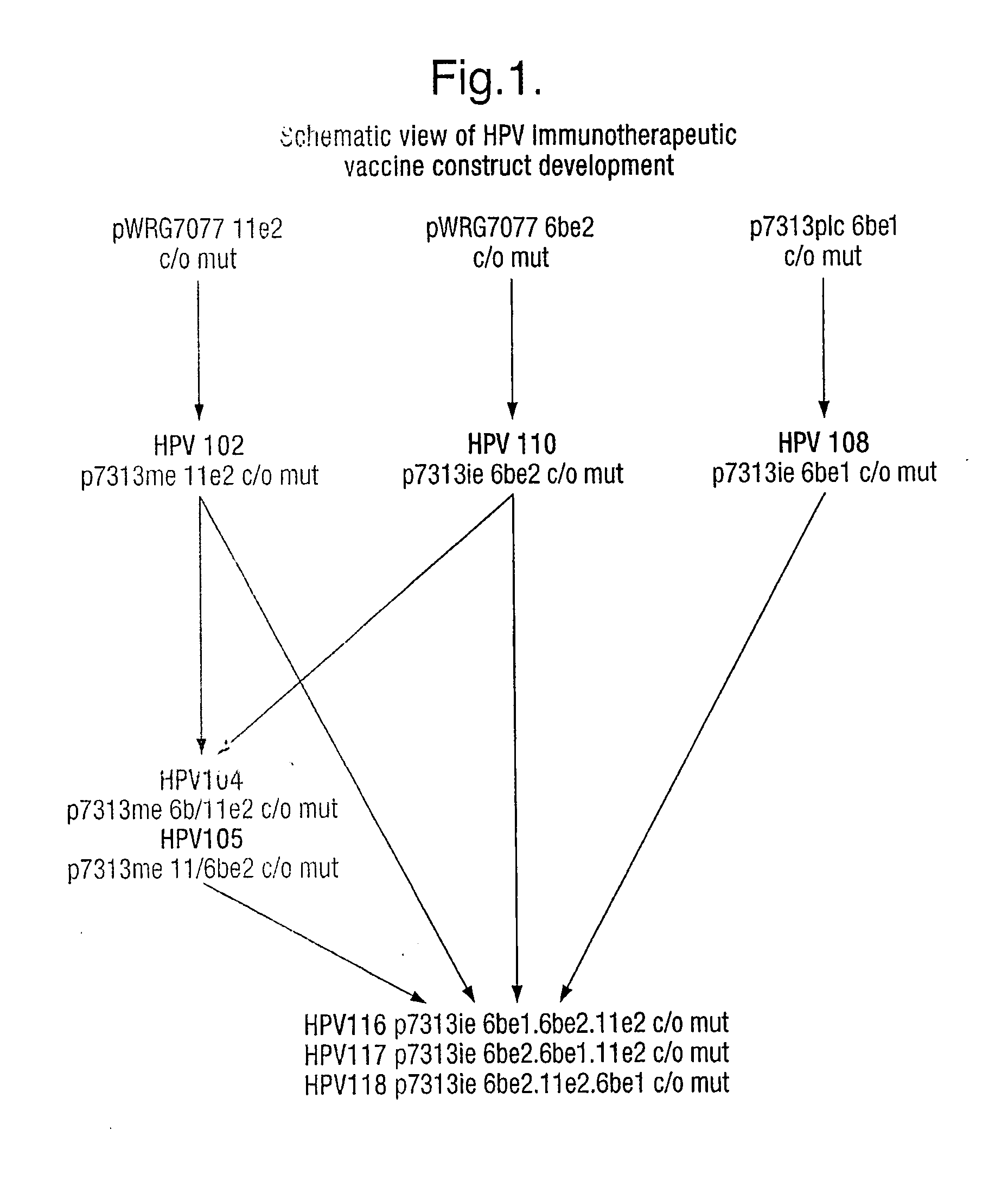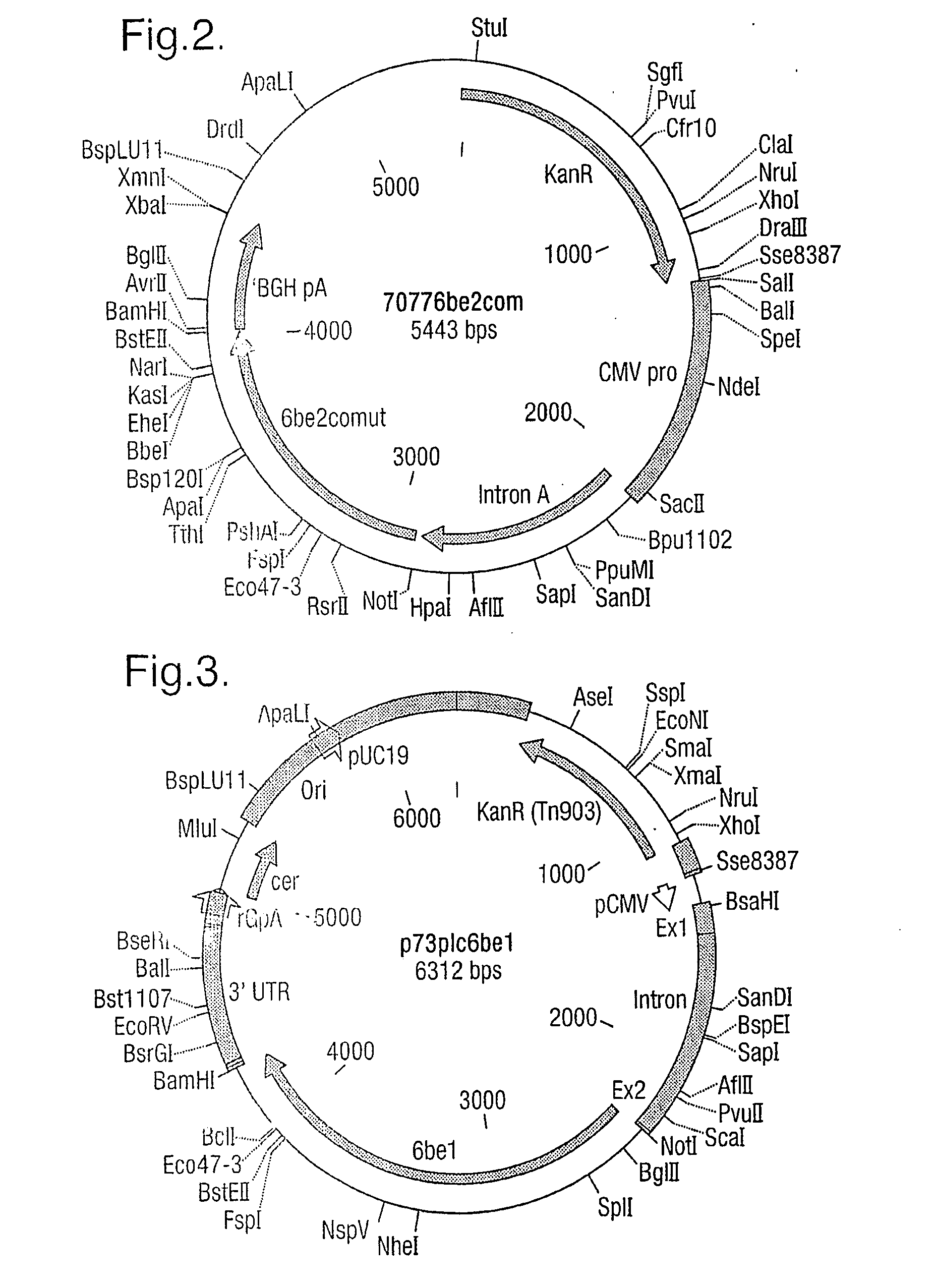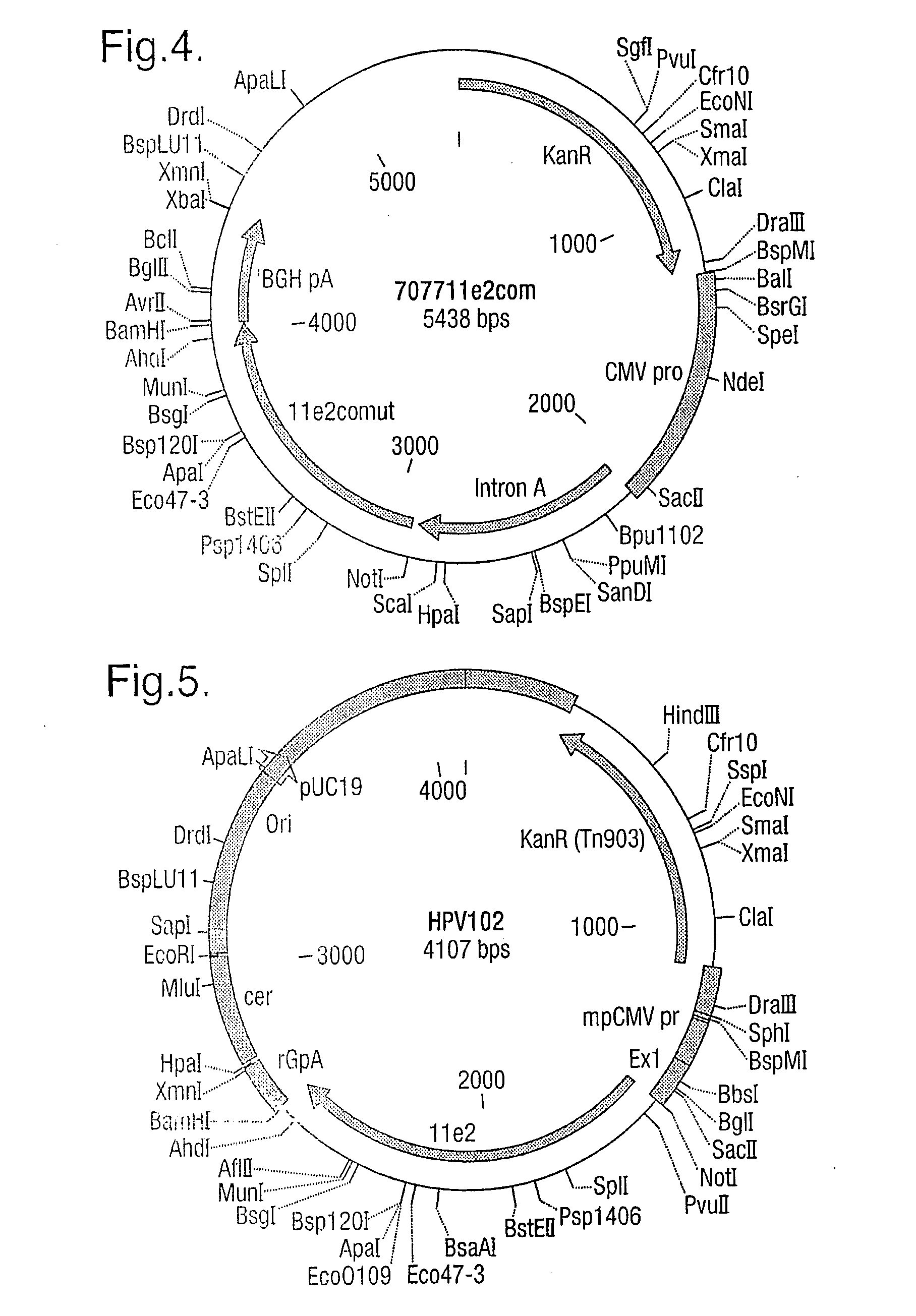Vaccine
a technology for vaccines and vaccines, applied in the field of vaccines, can solve the problems of slow development of hpv vaccines, difficult growth of hpv in tissue culture, and slow development of traditional live or attenuated viral vaccines, and achieve the effect of being useful in prophylaxis and more particularly, being effectiv
- Summary
- Abstract
- Description
- Claims
- Application Information
AI Technical Summary
Benefits of technology
Problems solved by technology
Method used
Image
Examples
example 2
Expression in Mammalian 293T Cells
[0115] Mammalian, 293T cells were grown at log phase at a final concentration of 2×105 cells pei 5 well Corning Costar™ (Corning Science Products, 10 The ValleyCentre, Gordon Road, High Wycombe, Bucks, UK) tissue culture plate overnight at 37° C. in 5% CO2. The following transfection mix was prepared and complexed for 25 minutes:
DNA of Interest2μg2μgMade up with sterile double distilled water16μlOPTI-mem ™ (Gibco BRL, Paisley, Scotland)8μlLipofectamine ™ (GibcoBRL)6μl.
[0116] Each cell monolayer in a well was washed carefully twice with OPTI-mem™. 800 μl of OPTI-mem™ was added to each well. 200 μl of OPTI-mem™ was added to each transfection mix, mixed and added gently to a cell monolayer. The plate was incubated for 5 hours at 37° C. in 5% CO2 after which the transfection mix and OPTI-mem™ were discarded. The cell monolayers were washed gently with cell growth medium twice and finally transfected cells were incubated for 24 hours in Dulbecco's Mod...
example 3
E1 Antigen Inactivation and Experimental Confirmation
[0119] The HPV E1 protein is a well conserved nuclear protein with non-specific DNA binding, ATPase and helicase activities. E1 also binds to host cellular DNA polymerase-α primase and, to the HPV E2 protein which then ‘recruits’ E1 into the pre-initiation viral DNA replication complex. The primary role of E1 is to initiate virus specific DNA replication in infected cells.
[0120] The DNA replication functions of E1 (and E2) are relatively non-specific and many studies have now shown that the E1 and E2 proteins from one genotype can drive the origin specific DNA replication of a plasmid carrying the replication origin sequence from a different genotype. Studies have also shown that the introduction of highly expressed E1 and E2 into cells already harbouring low copy number HPV plasmid can result in a significant amplification of that plasmid. This promiscuity carries with it a small potential safety risk which the project sought ...
example 4
[0125] The E2 protein of papillomaviruses is a site-specific DNA binding nuclear protein functioning as the primary replication origin recognition protein and assists in the assembly of the pre-initiation DNA replication complex. Full length E2 protein can also act as either a repressor or activator of viral transcription depending upon the position (relative to other transcription factor sites), and the affinity of the protein for its cognate binding site. E2 is also known to influence the transcription of several host cellular promoters. The mutational inactivation of E2 has been studied extensively and one point mutation in particular Lys 111→Ala (K111A) has been shown to inactivate both the transcriptional and replication functions of E2. This mutation may also have the addition benefit of preventing nuclear translocation of the protein. This mutation (K111A) was incorporated into each E2 antigen as part of the HPV DNA immunotherapeutic.
[0126] We set out to confirm the incapaci...
PUM
| Property | Measurement | Unit |
|---|---|---|
| size | aaaaa | aaaaa |
| size | aaaaa | aaaaa |
| concentration | aaaaa | aaaaa |
Abstract
Description
Claims
Application Information
 Login to View More
Login to View More - R&D
- Intellectual Property
- Life Sciences
- Materials
- Tech Scout
- Unparalleled Data Quality
- Higher Quality Content
- 60% Fewer Hallucinations
Browse by: Latest US Patents, China's latest patents, Technical Efficacy Thesaurus, Application Domain, Technology Topic, Popular Technical Reports.
© 2025 PatSnap. All rights reserved.Legal|Privacy policy|Modern Slavery Act Transparency Statement|Sitemap|About US| Contact US: help@patsnap.com



